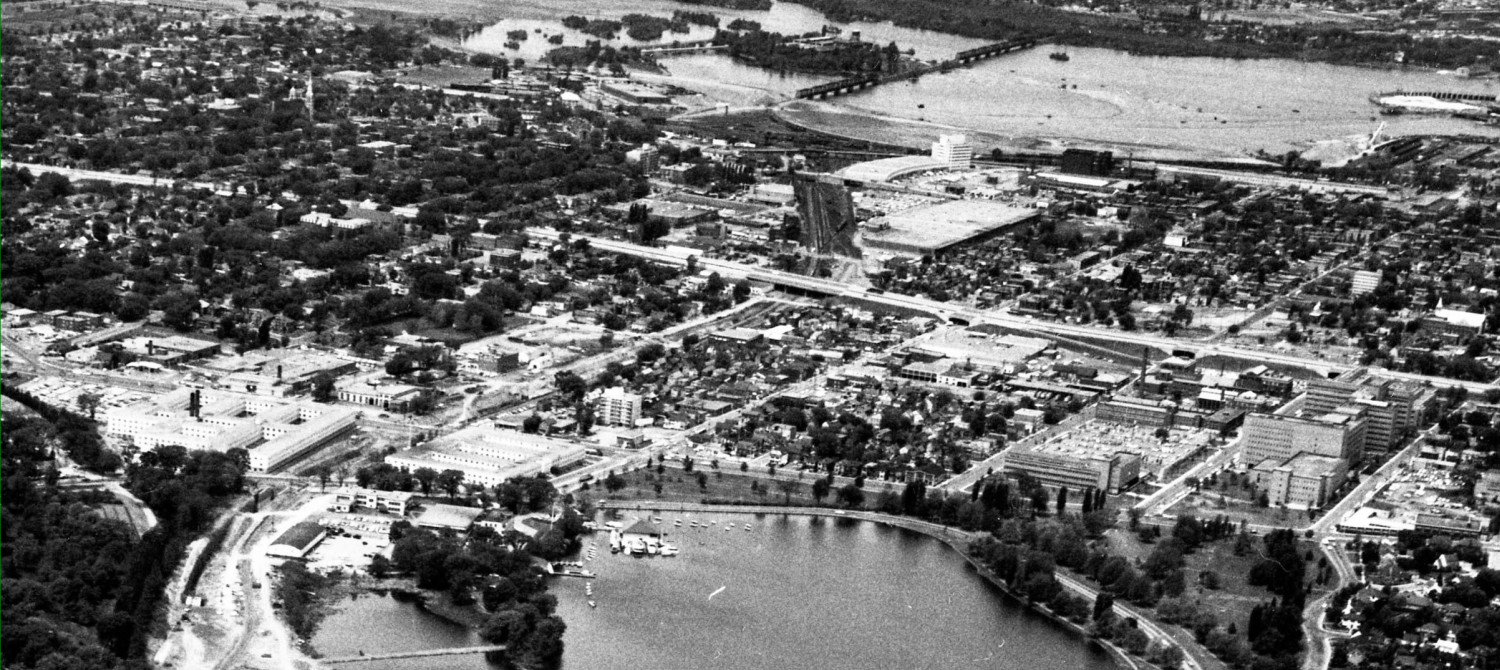Yesterday I self-indulged in a bit of bitch about how the City makes intersections safer for motor vehicles at the expense of pedestrians:
Look at almost any intersection. The City locates the signal posts back from the curb line, for the safety of motorists. But then directs pedestrians to stand in the same spot where they deem it too dangerous to place a wooden or steel post.
Allright, the natural question is what could be done to make it better?
My first response is Amsterdam, like many European cities, puts real bollards (set deep into cement bases, designed to repel cars, not the decorative plastic ones we install to mark bulbouts for motorists which sacrifice utility to prettiness). But we don’t have to go all the way to Europe.
Here’s a North American downtown complete street in West Palm Beach that takes pedestrian safety seriously.
Notice the bollards on all four corners, the brick crosswalks, the textured intersection pavers (which our engineers claim would hopelessly confuse Ottawa car drivers causing A Safety Problem and Liability Issue).
I found other cities in Florida were equally aggressive in taming the car. One city put large concrete blocks at the corners – seriously wreck-your-car-sized blocks.
The principle collection of utility posts is set back from the corner, whether for vehicle safety, to follow some design code, or because the street was “calmed” by the addition of new wider brick sidewalks, we don’t know. But the pedestrian-scale lights are curbside, as are those M-F’ng big blocks. They offer serious pedestrian safety.
Also from West Palm Beach, are installed mid-block bulb outs, landscaping, and well-marked pedestrian crossings. These things shake the stereotype of the US in general, and Florida in particular, as being totally car-centric.
Of course, not every street in every town has those features. But more and more do. We have to start somewhere. Then other towns copy the best practices. And they spread to other neighbourhoods other than the showpiece streets.
Here’s another feature, that may or may not work well given our snowplowing practices (although we have managed to install reflectors between lanes on our roads): these strobe lights flash very brightly along the leading edge of the crosswalk. They are activated by pedestrians approaching the crosswalk. No motorist can possibly miss them:
Ottawa is seriously behind other cities in traffic calming and making complete streets. We still put the motorist on a pedestal and devote the lion’s share of public space to one category of users. And devote too many resources to making motorists safer by maker life riskier for everyone else.







The whole issue of putting pedestrians first or last reminds me of what I saw in Manhattan earlier this year. As we are all aware, if a sidewalk in Ottawa is closed due to construction, a sign is put up telling pedestrians to use the other sidewalk, and that’s it! In Manhattan, if a sidewalk is closed due to construction, a temporary sidewalk is created in the roadway adjacent to the closed sidewalk, with barriers set up to separate pedestrians from vehicular traffic.
Neil: I share your horror at what despicable treatment Ottawa melds out to pedestrians at construction sites, and there are numerous previous posts showing proper wide detour sidewalks from Boston, and better umbrella-type overhead safety roofs that don’t use up all the sidewalk space, and of course, the typical Ottawa approach, exemplified by the Ashcroft Canyon mini-sidewalks that were boxed in by standard overhead scaffolding barely wide enuf for one walker. Appalling. But we get what we deserve; so join in the complaints.
Glad to see you back, Eric.
One positive change has seen the introduction of advanced pedestrian green lights at busy intersections. Vehicle traffic is held by an extended rad while the pedestrian crosswalk gives the signal to cross. By the time the vehicle signal goes green the pedestrians are already out in mid crosswalk and represent a clear and visible obstruction to any turning traffic.
When I first say this (corner of Holland and Wellington) I thought it was due to a malfunction of the signal circuits. But the same “feature” appears to be showing up elsewhere.
I think it is a good move and an excellent safety feature. More than once I have stepped off the curb only to find myself about to do battle with a metal monster determined to make a right turn.
The technical term for this is “Leading Pedestrian Interval”.